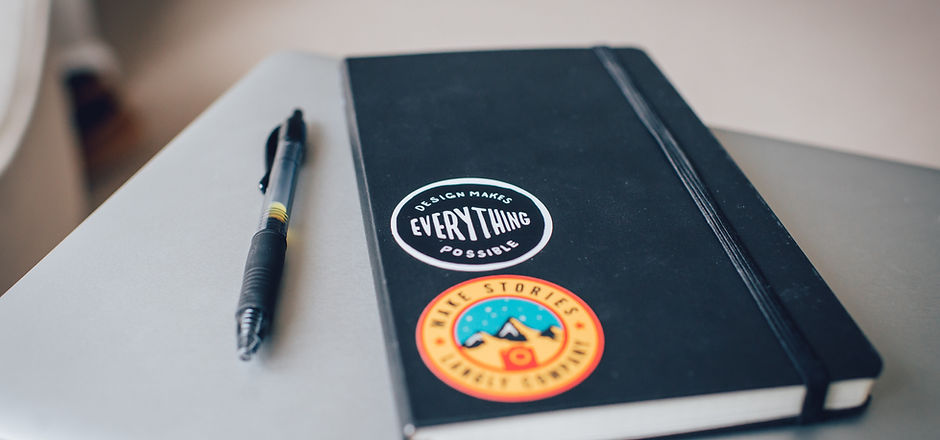My Skills & Experience
HELLO THERE!
I'M VIPIN VERMA.
Thanks for visiting! This is where you’ll find my professional experience and skills, my interests and education. I created this site to showcase the one thing I’m sure of - that there’s no one else like me out there. Browse through all the information I’ve provided here, and contact me directly to learn more.

PERSONAL STATEMENT
I am a PhD candidate looking to secure an internship position for summer'19 where I can put my knowledge to good use, while simultaneously developing my skills in a business environment. With lots of practical experience to back me up, as well as an extensive skill set, I’ve got the flexibility and necessary experience to get things done right. Despite not having formal education in Computer Science, I have a lot of experience in programming and software development. Want to know more about what I can do for you? Get in touch today.

WORK EXPERIENCE
My Career
TECH. LEAD, BLUESAPLING
Feb 2016 - Sep 2016
• Developed a responsive e-commerce website www.inmonarch.com with a colleague, for custom apparel shopping which went live in Oct 2016
• Researched and brainstormed the available technologies and the database structure to be used for the application
• Worked on ReactJS, RubyOnRails, JavaScipt, Jquery, Coffeescript, HTML5, CSS3 and Bootstrap3 for web development
• Validated and ensured that the website is responsive with respect to major desktop and mobile browsers
• Used Bitbucket with git for version-control
• Debugged and fixed various browser quirks affecting browser compatibility for the application using CSS/JS polyfills and workarounds
• Built a Content Management System (CMS) to handle the content displayed on the inmonarch web app
SOFTWARE ENGINEER, NEXTAG
Aug 2012 - Feb 2016
• Developed parts of the web applications for Nextag using Agile in Java, JSP, HTML, CSS, JS and JQuery
• Modified existing software to correct errors, upgrade interfaces and improve performance
• Search Engine Optimization to increase the page rank of Nextag.com
• Used git for version control and gerrit for peer code reviews
• Collaborated closely with the members of back-end team and integrated their solutions to the front-end of the application
• Managed production releases on a weekly basis for Nextag.com while overseeing the staging analysis process, ensuring that the new build is devoid of performance issues
• Tested the web applications regressively as a part of Agile methodology using JIRA and BugZilla
• Drove the experiment and translation framework independently for Nextag
• Automated various parts of the QA process in cucumber-selenium framework
• Tested the health of the system by exception parsing on live servers and prevented potential production outages
• Presented the features developed to the administrative authorities
ASSOCIATE SYSTEM ENGINEER, IBM
Jul 2011 - Aug 2012
• Analyzed the business requirement, project specifications and functionality
• Verified the requirements with respect to the Functional Design Document, Metrics Document and Use cases
• Scripted, planned and executed detailed test cases as a tester under System Integration and End to End testing for Walmart Sam’s club and Vodafone-Spain
• Executed, identified and logged the defects and retested them after the issue was resolved
My skills have been built up over years of professional work experience as well as research and simple observation. I have a great balance between industry-specific skills and soft skills, which means I have what it takes to do brilliant work and make a contribution to any team. If you’re interested in getting to know more about me, and the skills I possess, get in touch. I’d love to discuss with you all the tools, skills and more I can put to use for you.

JAVASCRIPT
Worked in JavaScript for about four years. I created the front-end of inmonarch using js, along-with several other tools including JQuery, ReactJS, and CoffeeScript.

CSS
Worked with CSS for ~4 years. I used Twitter Bootstrap library for creating the responsive front-end of inmonarch.com

JAVA
Worked in Java during my tenure at Nextag. We used servlets to render the HTML of the webpages.

C++
C++ was the first programming language that I learned in my life and the reason that I fell in love with programming. In 2006 when I was in twelfth standard, I developed a menu-driven application in C++ to manage hospital activities which won first prize in Annual School Programming fest. I also worked with OpenGL in C++ as a part of my coursework.

HTML
Extensively used HTML as a front-end developer during my 5 years of professional experience.

RUBY ON RAILS
Worked in RubyOnRails to create the e-commerce portal inmonarch.com

UNITY3D
Developed a few games in Unity3D using C# programming as a part of my research and coursework at Arizona State University.

R STUDIO
Analyzed the Pima Indian diabetes dataset for predicting the diabetes from non-medical data using clustering techniques in RStudio as an R Shiny app.

EDUCATIONAL EXPERIENCE
What I’ve Learned
Being a lifelong learner is a trait that is really important to me, and I know that a good education is not just for the schoolyard. Some lessons were learned in the traditional way, while others I have received from professional mentors, industry professionals and in some cases, friends and family. I’d love the opportunity to talk to you about how my academic background could benefit you, so get in touch.
PHD, ARIZONA STATE UNIVERSITY
2016-2019
I am a doctoral student of Human Systems Engineering at the Arizona State University, Polytechnic campus with a GPA of 3.97/4
MS, STRATFORD UNIVERSITY
2012-2013
I did my part-time Masters in Information Assurance from Stratford University, with a GPA of 3.92/4 while working full-time with Nextag India Pvt. Ltd.
B.TECH, IIT ROORKEE
2007-2011
I completed my B.Tech in Production & Industrial Engineering from Indian Institute of Technology, which is one of the top 6 engineering colleges in INDIA (GPA 7.654/10)
The admission to IIT was very competitive, I secured an all India rank of 2317 out of 3.2 lakh applicants who appeared for the qualifying entrance examination.
PROJECTS
Check out my portfolio to find out what I’ve worked on. Here, you can find out how I approached my projects from concept to execution, and what skills I brought to the proverbial table that made these a real success. If any of these projects appeal to you, or you have a specific project in mind you’d like me to get involved in, give me a call today.

Mar - Sep 2016
I really enjoyed working on this project, one of the bigger ones in the field where I created an e-commerce portal for customization shopping with the help of a colleague at BlueSapling. I created most of the front-end and my colleague created majority of the back-end for this website. Using my Ubuntu system, I worked on Ruby on Rails, HTML, CSS, JS, JQuery, Coffeescript, ReactJS and bootstrap to make the responsive design. I’m proud of the work I did on this project and the learning it imparted.
CHEM-O-CRYPT
Aug 2018 - present
I created a content-agnostic educational video game called Chem-o-Crypt that can teach chemical equation balancing or basic text encryption using Caesar cipher, one at a time. The game is developed using Unity3D with an embedded assessment that helps to assess the learner skills at run-time and dynamically adapt the game-play in accordance with the skill level of the learner. The assessment involves multiple techniques including Dynamic Bayesian Network, log analysis, and facial emotion recognition using Affectiva SDK.
I recently defended my Phd dissertation proposal and my presentation is available here. The game consists of 6 levels, and a brief game-play for each level is shown in the presentation from slides 14 through 19.

PUBLICATIONS
MOTOR INDICATORS OF COGNITIVE LOAD: A MOUSE-TRACKING APPROACH
Nov 2018
Presented a poster at the 59th Annual Meeting of the Psychonomic Society, New Orleans, LA.
The study involved finding out if the hand motion can be used to make inferences about cognitive load, and to make predictions about the level of cognitive load.
The supervised classifiers, trained using hand motion data, showed prediction accuracy that is about 20% greater than the chance level (33%) and could predict about 10% ~ 20% of the variance of the cognitive load.
USE OF MOUSE-TRACKING METHODS TO MEASURE COGNITIVE LOAD
Sep 2018
Integrated with computerized education platforms, the mouse-tracking technique could provide an inexpensive and less intrusive tool for assessing cognitive load. The present study examined whether mouse-tracking can quantify changes in cognitive load. Participants performed a dual-task, which required them to perform primary tasks of moving a computer mouse cursor along the vertical and the horizontal axes to a target, and secondary arithmetic tasks designed to impose different levels of cognitive load. Analyses of the mouse-tracking data indicated that slower mean response time and less trajectory deviation were observed when participants were given secondary tasks imposing a greater cognitive load, whereas slower mean response time and greater trajectory deviation were observed when participants moved a cursor toward a smaller-sized target. The cause behind the quantitative difference between the cognitive load effect, and the motor task difficulty (target size) is discussed, as are implications of these results for computerized education platforms.
GIVE AND TAKE IN A MOUSE-TRACKING CHOICE PARADIGM
Nov 2017
Do “gender/race – valence” biases interact with approach- avoidance movements: Giving an object or taking it away?
Developed a mouse tracking application deployed on heroku, to gauge the implicit bias of participants.
Results indicated that the approaching trajectory was modulated by the cursor shape and the gender of target face, whereas avoidance trajectory was modulated only by the cursor shape.
EVALUATING GAMESCAPES AND SIMAPPS AS EFFECTIVE CLASSROOM TEACHING TOOLS
In Press
GameScapes and SimApps, are new narrative and game mechanic influenced tools developed for improving the classroom learning experience for students. In Fall 2015, GameScapes and SimApps were tested with 16 American colleges and universities and 26 members of their faculties to improve learning outcomes in first-year composition classes, many including English as secondary language students, specifically focusing on writing skills and grammar abilities. Several GameScapes and SimApps developed for the course were tested with over 1000 students. Faculty members could select at least two games from a set of 17 such games that would best align with their courses’ learning objectives. Scores earned in student gameplay were converted to points that applied to students’ grades in the courses. This paper presents a complete evaluation of the GameScapes and SimApps that were used by the teachers and students and discusses best practices, classroom observations, learning outcomes and future scalability of this methodology to other courses.



